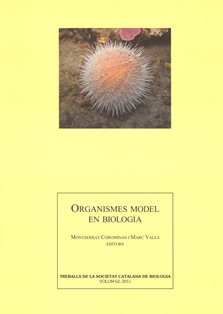La regeneració i l'homeòstasi en les planàries, un model clàssic de biologia del desenvolupament
Abstract
Planarian regeneration and homeostasis, a classic developmental biology model. Regeneration is the ability of the fully developed organism to replace fragments lost by traumatic amputation or degeneration. Regeneration of the new structures is achieved either by cell proliferation and de novo formation, or by remodelling of the pre-existing tissues. Planarians, which can regenerate a whole new organism from a small piece of their body, have attracted the interest of scientists throughout history. In 1814, Dalyell concluded that planarians could almost be called immortal under the edge of the knife. Planarian regeneration involves the generation of new tissue at the wound site via cell proliferation, producing a new undifferentiated tissue or blastema, and the remodelling of pre-existing tissues to restore proportions. Another astonishing property of planarians is their capacity to grow and shrink depending on food availability and temperature. Remarkably, during the whole growth/degrowth process planarians keep normal body proportions and functions, thanks to a homeostatic control. All that plasticity is based, at the cellular level, upon the presence of totipotent stem cells in a high proportion (20-30% of total cell number in an adult organism). Another basic property is the continuous activity of the morphogenetic mechanisms that usually appear only once during the development of other model systems. The application of new methodologies at the cellular, molecular and genetic level in the postgenomics era allows us to functionally analyse the universal developmental pathways and genes in a new scenario, planarian regeneration.Downloads
Downloads
Published
Issue
Section
License
The intellectual property of the articles belongs to the respective authors.
At the time of submitting the articles to Treballs de la Societat Catalana de Biologia, authors accept the following terms:
— Authors assign to the SCB (a subsidiary of the Institut d’Estudis Catalans) the rights of reproduction, public communication (including communication through social networks) and distribution of the articles submitted for publication to Treballs de la Societat Catalana de Biologia, in any form and medium, including digital platforms. The Publications Committee reserves the right to accept or refuse submitted articles and the right to make any editorial changes it deems appropriate. If the suggested changes are accepted by authors, they should re-submit the article with such changes.
— Authors answer to the SCB for the authorship and originality of submitted articles. In other words, authors assure that submitted articles do not contain fragments of works by other authors or fragments of their own previously published works; that the content of articles is original, and that the copyright of third parties is not infringed upon. Authors accept this responsibility and undertake to hold harmless the SCB for any loss or damage resulting from non-compliance with this obligation. Furthermore, they should include a statement in articles submitted to the journal regarding their responsibility for the content of the articles.
— Authors are responsible for obtaining permission for the reproduction of all graphic material included in articles, and they should moreover ensure that images, videos, etc., have been created with the consent of the individuals appearing in them, and that material belonging to third parties is clearly identified and acknowledged as such within the text. Likewise, authors should provide the respective consents and authorisations to the SCB when submitting articles.
— The SCB is exempt from any liability arising from the possible infringement of intellectual property rights by authors. In all cases, it undertakes to publish corrections, clarifications, retractions and apologies, if necessary.
— Unless otherwise stated in the text or in the graphic material, the contents published in the journal are subject to an Attribution - NonCommercial - NoDerivs 3.0 Spain (by-nc-nd) license from Creative Commons, the full text of which may be consulted at https://creativecommons.org/licenses/by-nc-nd/3.0/es/deed.en. Therefore, the general public is authorised to reproduce, distribute and communicate articles as long as their authorship and publishing entity are acknowledged, and no commercial use is made of them nor derivative work produced from them.
— The journal is not responsible for the ideas and opinions expressed by the authors of published articles.












